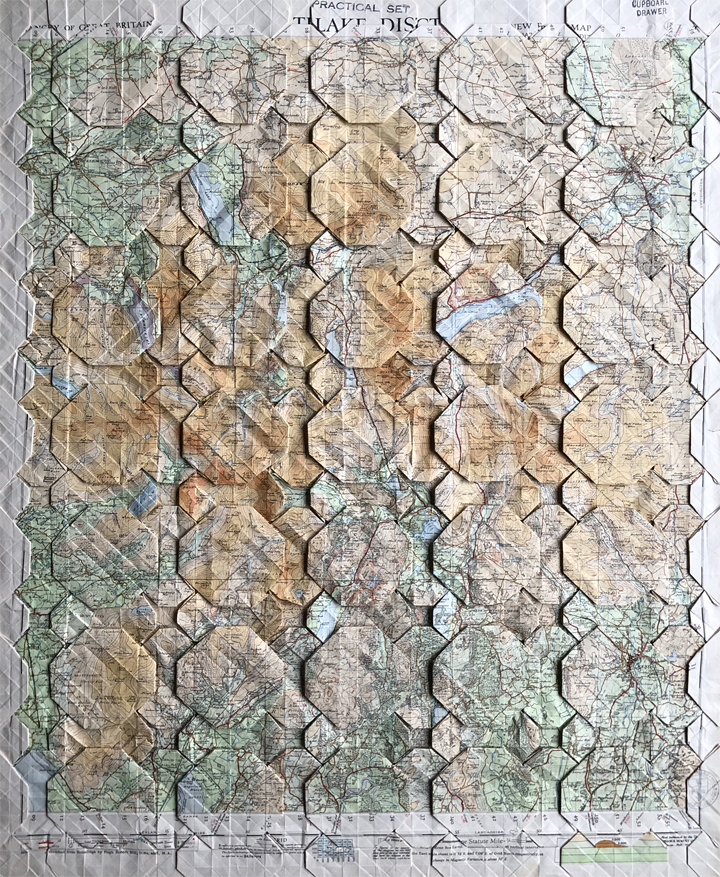A tessellation (also called tiling) is when shapes are arranged side by side to produce a pattern with no gaps in between. Tessellations have existed since ancient Egyptian times and are still common today in floor and wall tilings.
Origami tessellations have visual similarities to the tessellations mentioned above; but they are physically quite different. An origami tessellation is not made of separate pieces of paper placed side by side: instead, they are made with one sheet of paper. This one sheet of paper is folded such that it has a tessellated pattern. There are two basic methods of folding:
Method 1: Unlike traditional origami, origami tessellations are not made in a linear step-by-step fashion. There are very few instructions on how to fold an origami tessellation and the way you fold is a matter of personal preference. One method is to:
- Drawn or print a crease pattern onto a piece of paper
- Crease the paper with mountain and valley folds
- Fold the pre-creased paper into the final shape
Method 2: Another method is to fold an entire sheet of paper into a a grid and then create a model from this grid of creases. When folding the pre-creased paper into the final model, it sometimes works best to start from the center of the paper and work outwards. Alternatively, begin working from one edge of the paper and extend towards the opposite edge. Often, the pre-creased paper needs to be jiggled and tugged to coerce it into its final shape. Three words of advice: patience, practice, and perseverance.
| click image for further information | |
 |
|
| map tessellation | |

